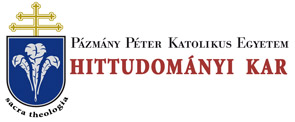Folia Theologica et Canonica 6. 28/20 (2017)
IUS CANONICUM - José Miguel Viejo-Ximénez, Raymond of Penyafort decretalist
122 JOSÉ MIGUEL VIEJO-XIMÉNEZ in the marginal glosses of some DG manuscripts1'’. It is uncertain whether other marginal comments signed by “r.” in an Austrian copy of the Compilatio antiqua quarta (1216) belong to Raymond14. As the loan of 1218 suggests, at the time when he studied and taught in Bologna there was at least another «magis- ter Raimmundus» (Raymond of Vic?), and only a comparison of the Austrian glosses and Raymond’s genuine writings could help determine whether the Raymonds were the same; this research remains to be done. For similar reasons, the authorship of a short comment (summula) on canonical rules in regard to consanguinity and affinity -the arbores consanguinitatis et affinitatis secundum reimundum- has not been definitely established15. The reduction of the marital impediments of consanguinity and affinity until the fourth degree passed by the Fourth Lateran Council (1215) attracted the attention of the canonists, whose comments on the constitution 50 were collected in numerous works16. Shortly after the council, and after Johannes Teutonicus (1170-1245) had failed to achieve the endorsement of Innocent III (1198-1216) for his Compilatio quarta (1216), the young Catalonian professor left the exegetical pattern of the Summae titulorum and arranged in the SIC a system of his own17. In the 13 Cf. Kuttner, S., Repertorium der Kanonistik (1140-1234), Città del Vaticano 1937. 442. Kutt- NER, S., Bernardus Compostellanus Antiquus: A study in the glossators of the canon law, in Traditio 1 (1943) 333. Kuttner, S., The Barcelona edition of St. Raymond’s first treatise of canon law, in Seminar 1 (1950) 54, footnote 8, 60-61. Kuttner. S, Zur Entstehungsgeschichte der Summa de casihus poenitentie, in Zeitschrift der Savigny-Stifiung für Rechtsgeschichte, Kano- nistische Abteilung 39 (1953) 419, footnote 2. Weigand, R., Die Glossen zum Dekret Gratians. Studien zu den frühen Glossen und Glossenkompositionen (Studia Gratiana XXV-XXVI), Roma 1991.893 and 948. 14 Cf. Kuttner, S., Johannes Teutonicus, das vierte Laterankonzil und die Compilatio quarta, in Miscellanea Giovanni Mercati, V. Città del Vaticano 1946. 624, footnote 8. Kuttner, S., Barcelona edition, 54, footnote 8. Kuttner, S., Entstehungsgeschichte, 419, footnote 3. 15 Kuttner, S., Barcelona edition, 54-56. Kuttner, S., Entstehungsgeschichte, 419. García y García, A., jNo es esta!, in Revista Espanola de Derecho Canonico 35 (1979) 194-196. A modern edition of both commentaries (summulae): Ochoa, X. - Díez, A. (ed.), Summa de matrimonio. Décrétâtes novae. Responsiones ad duhitabilia. Quaestiones canonico-pastorales. Summula de consanguinitate et affinitate (Universa Bibliotheca Iuris I-C), Roma 1978. 1079-1094 and 1095-1104. 16 On the impact of the Council, cf. García y García, A. (ed.), Constitutiones Concila quarti La- teranensis una cum Commentariis glossatorum (Monumenta Iuris Canonici Series A/2), Città del Vaticano 1981.3-17. García y García, A., The Fourth Lateran Council and the Canonists, in Hartmann, W. - Pennington, K. (ed.), The History of Medieval Canon Law in the Classical Period, ! 140-1234. From Gratian to the Decretals of Pope Gregory IX, Washington D.C. 2008. 367-378. On the comments on the arbores consanguinitatis et affinitatis, cf. García y García, A., Glosas de Juan Teutònico, Vicente Hispano y Dámaso Húngaro a los ‘arbores consanguinitatis et affinitatis’, in ZRG Kan. Abt. 68 (1982) 153-185. Schadt, H., Die Darstellungen der Arbores Consanguinitatis und der Arbores Affinitatis, Bildschemata in juristischen Handschriften, Tübingen 1982. 17 First modem edition: Rius Serra, J. (ed.), Sancii Raymundi de Penyafort Opera omnia, 1: San Raymundo de Penyafort, Summa iuris, Barcelona 1945, nonetheless, cf. the strong criticism of
